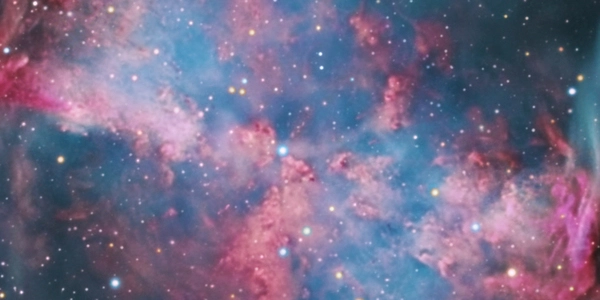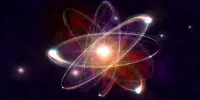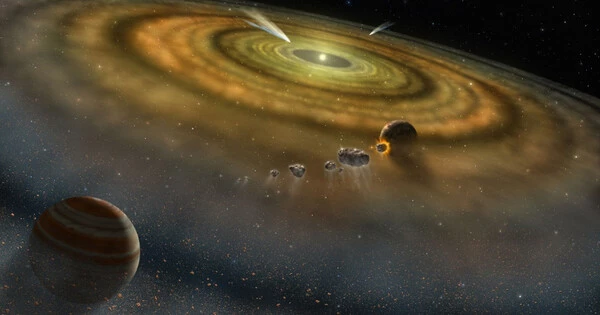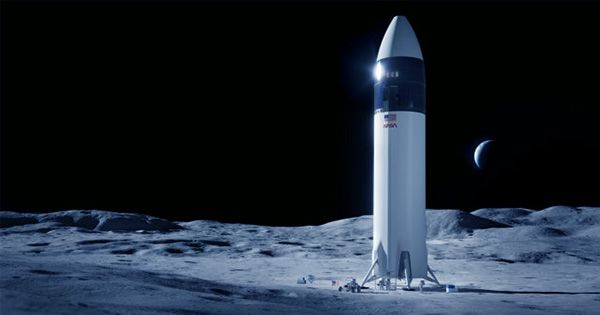Interstellar dust is composed of small particles of various materials, including carbon, silicon, and metals, that are dispersed throughout the space between stars. These particles absorb and scatter light, making stars appear brighter and redder than they are. Interstellar extinction is the name given to this phenomenon.
Asymptotic giant branch (AGB) stars, which are typically slightly larger and older than our own sun, are known producers of interstellar dust. Dusty AGBs are particularly prominent dust producers, and the light they emit varies greatly. For the first time, a long-period survey discovered that the variable intensity of dusty AGBs corresponds to variations in the amount of dust produced by these stars. Because this dust can result in the formation of planets, studying it can shed light on our own origins.
You’ve probably heard of the James Webb Space Telescope (JWST) which has been in the news lately. It’s famous for being the largest and most sensitive space telescope designed to observe infrared (IR) light. But long before the JWST took to the skies, two other IR space telescopes, AKARI and WISE, have been surveying the cosmos, both of which have ended their initial missions, but produced so much valuable data that astronomers are still finding new discoveries with it. The latest finding from that data by doctoral student Kengo Tachibana from the University of Tokyo’s Institute of Astronomy and his team, could have implications for the study of the origins of life itself.
Our latest study has pointed us in the right direction. We discovered that the light from dusty AGBs varies over timescales of several hundred days thanks to long-period IR observations. We also discovered that the dust concentrations in the spherical shells of dust produced and ejected by these stars vary in step with the stars’ luminosity changes.
Kengo Tachibana
“We study stars, and infrared light from them is a key source of information that helps us unlock their secrets,” Tachibana explained. “Due to a lack of advanced dedicated platforms, most IR data was from very short-period surveys until recently. However, missions such as AKARI and WISE have enabled us to conduct longer-term surveys of things. This allows us to see how things may change over longer time periods and what these changes may imply. We recently focused on a type of star known as asymptotic giant branch stars, which are interesting because they are the primary producers of interstellar dust.”
This interstellar dust isn’t the same as the stuff that accumulates on your floor when you don’t vacuum for a few days; it’s a term for heavy elements that disperse from stars and lead to the formation of solid objects like planets. Although it has long been known that AGBs, particularly so-called dusty AGBs, are the primary producers of dust, it is unknown what the primary drivers of dust production are or where we should look to find out.

“Our latest study has pointed us in the right direction,” Tachibana explained. “We discovered that the light from dusty AGBs varies over timescales of several hundred days thanks to long-period IR observations. We also discovered that the dust concentrations in the spherical shells of dust produced and ejected by these stars vary in step with the stars’ luminosity changes. The dust concentrations around the 169 dusty AGBs surveyed would coincide regardless of their variability period. So we’re confident these are linked.”
Finding a link between dust concentration and variability in star brightness is only the first step in this investigation. The team now wishes to investigate the possible physical mechanisms underlying dust production. They intend to continuously monitor various AGB stars for many years for this purpose. The University of Tokyo is nearing the end of a large ground-based telescope project in Chile called the University of Tokyo Atacama Observatory, which will be dedicated to infrared observations.
When we look up at the night sky, we see stars twinkle as a result of the Earth’s atmosphere. Because the atmosphere is made up of different layers of air with varying temperatures and densities, light passing through it can bend and refract in different directions. The stars appear to twinkle or scintillate as a result of this effect.
While interstellar dust can affect the light that reaches us from stars, the twinkling effect we see is caused by the Earth’s atmosphere.
















